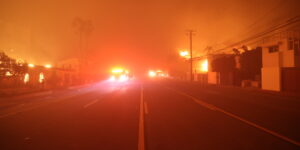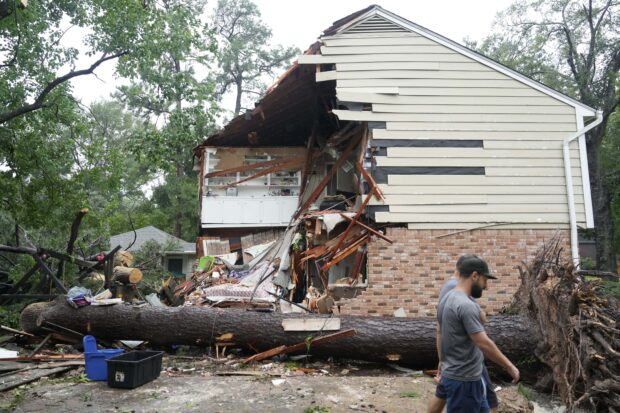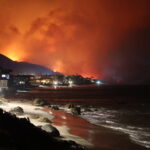Insurance agent Ian Hartgrove was one of many Houston residents caught off guard by the size of Hurricane Beryl, which made landfall on the Texas Gulf Coast early last week.
Beryl had weakened to a Category 1 hurricane by the time it reached Texas, but the storm’s path directly hit Houston, bringing 90 mph winds and rainfall of 12 inches or more to parts of the region.
Hartgrove, an independent agent at Hartgrove Insurance, said Beryl’s impact on Houston was more severe than any hurricane since Ike in 2008.
“This hurricane was so large,” said Hartgrove. “A Category 1, I think most people let their guard down. I’ve lived in Houston my whole life and been doing this over a decade, and I wasn’t expecting this.”
At least nine people in Texas and one person in Louisiana have died from the storm as recovery is underway in the Gulf Coast. Millions were still without power Wednesday amidst surging temperatures in southeastern Texas.
Hartgrove said he spent all of Tuesday fielding calls from customers, most of whom reported minor damage.
“I’ve got neighbors with different agents who’ve got trees up all in their homes,” he said.
Hartgrove said his house was hit by storm, causing a busted up tree in his front yard, a broken fence and water damage. He doesn’t expect the damage to meet his deductibles.
“I’ll be paying out of pocket, but I suspect a lot people will be, too,” Hartgrove said.
The industry standard for deductibles in southeastern Texas is 2 percent, but many people this year went with higher deductibles of 5 percent or even 10 percent, Hartgrove said.
“There’s people out there who are self-insuring their roofs whether they know it or not,” he said.
Most of Hartgrove’s customers maintain wind and hail coverage through the standard market, but he expects access to standard carriers will be harder to come by after this storm.
One option for residents along the Texas Gulf Coast who can’t obtain standard wind and hail coverage through the private market is to go through the Texas Windstorm Insurance Association (TWIA), the state’s residual insurer of last resort.
TWIA, which provides protection to fourteen coastal counties, plus part of Harris County, is projecting its policy count to grow to 265,000 by year’s end—up about 70,000 from two years ago.
TWIA reported more than 3,300 claims from Beryl as of mid-Tuesday last week, with most of the claims in Galveston and Brazoria Counties. TWIA implemented a policy moratorium on Friday, which has since been lifted.
“We are accepting applications for new and increased coverage,” a TWIA spokesperson said.
Hartgrove said he expects more customers will soon be using two separate policies—one for homeowners and the other for wind and hail under TWIA.
“The standard carriers, I don’t think they’re going to be able to sustain these losses,” Hartgrove said. “They’re pulling out. They’re non-renewing.”
Hartgrove said customers will continue to see home insurance rates go up as carriers account for greater catastrophic exposure. While Hartgrove is usually 50/50 on whether homeowners should file a claim after a storm, he is recommending customers submit because hurricanes are ruled as an Act of God , and claims won’t necessarily be held against them.
“These individual hurricane claims aren’t going to be held against any individual person,” Hartgrove said. “We’re all going to see the impact.”
For Hartgrove and other insurance agents in southeastern Houston, picking up the pieces from Beryl will be a weeks, if not months-long process.
“I think it’s times like this that either make or break insurance agents,” Hartgrove said. “They either stay in the business or they leave.”
Photo: People walk past a home where Maria Loredo, 74, died after a tree fell on her second story bedroom during Hurricane Beryl, July 8, 2024, in Houston. (Melissa Phillip/Houston Chronicle via AP)





















 Tooker Takes President Role at The Hartford
Tooker Takes President Role at The Hartford  The Institutes, Kevelighan Fire Back at Retaliation Claims by Former Triple-I Employee
The Institutes, Kevelighan Fire Back at Retaliation Claims by Former Triple-I Employee  Why All the Fuss? Fairness Regulations Meet Insurers’ Growing Use of AI
Why All the Fuss? Fairness Regulations Meet Insurers’ Growing Use of AI  California Wildfires Will Likely Lead to Large Economic and Insured Losses
California Wildfires Will Likely Lead to Large Economic and Insured Losses 




